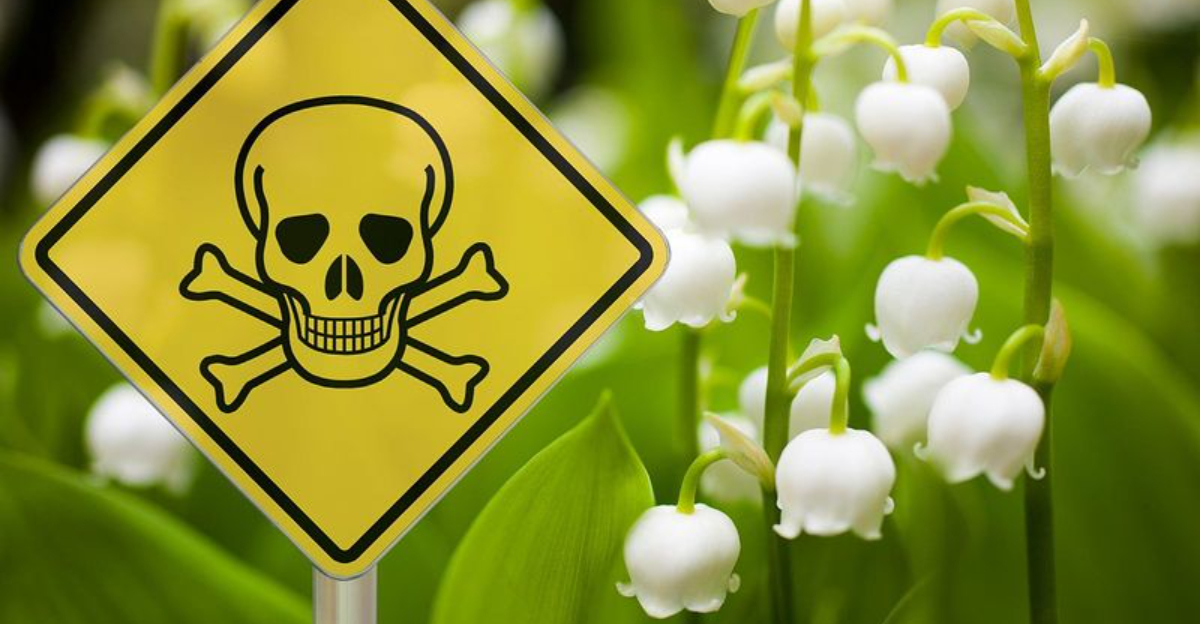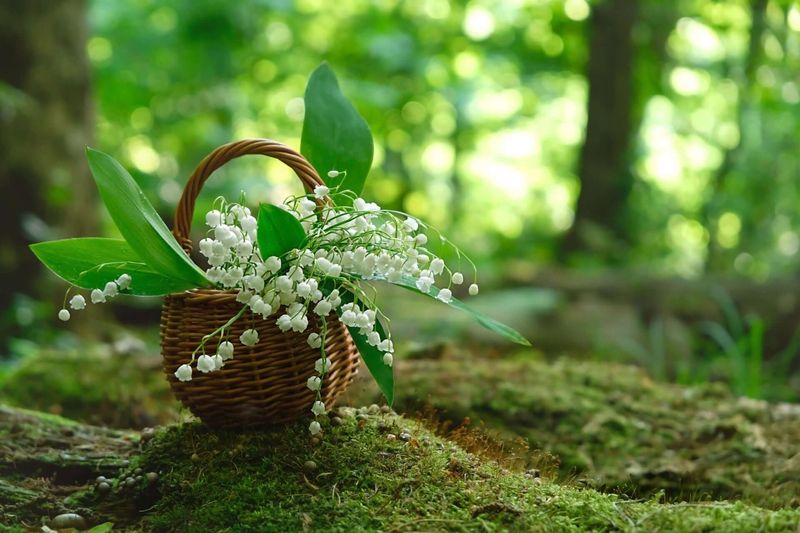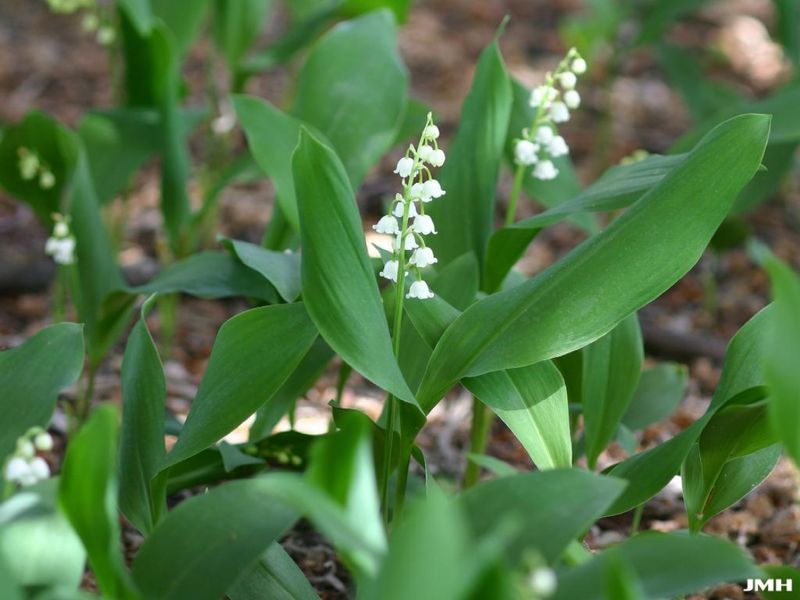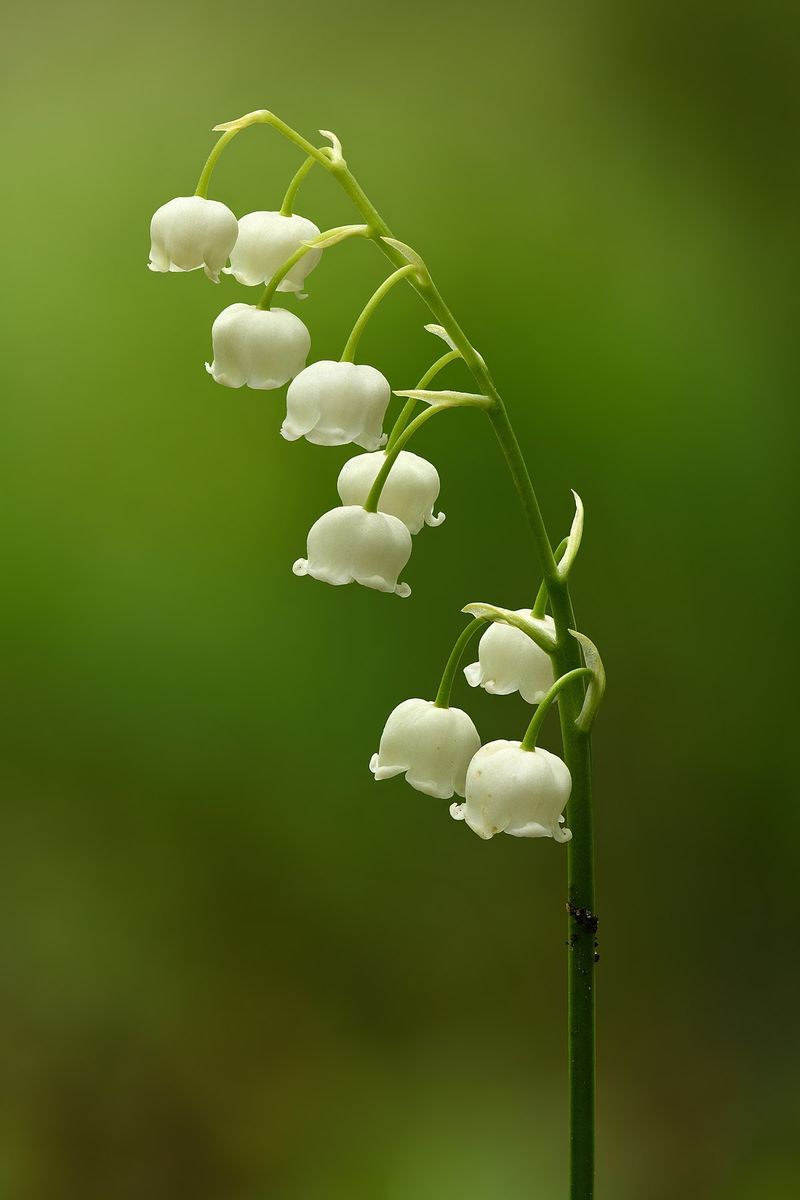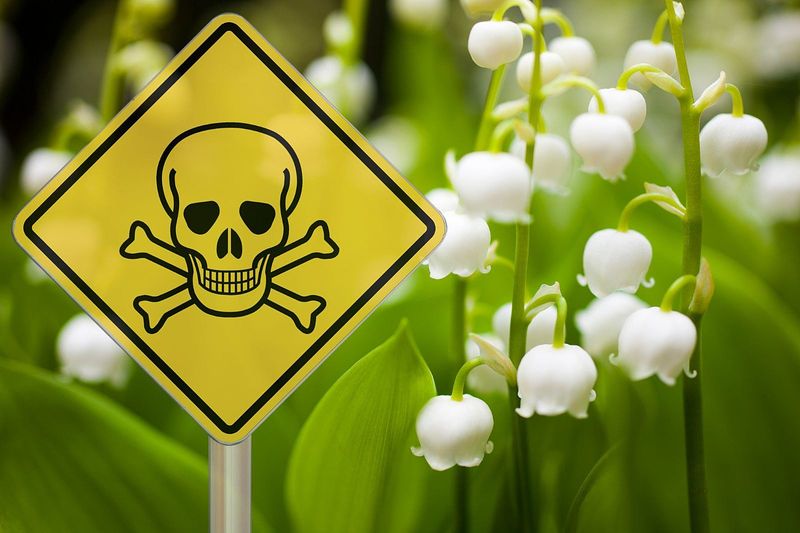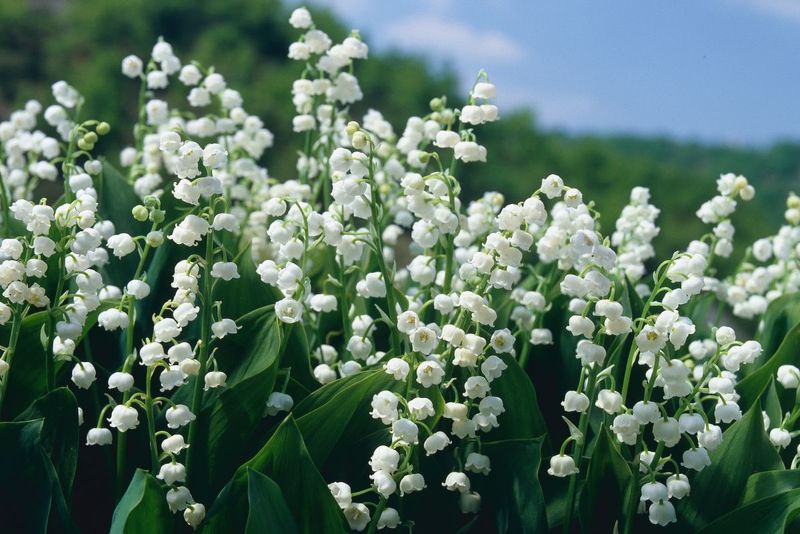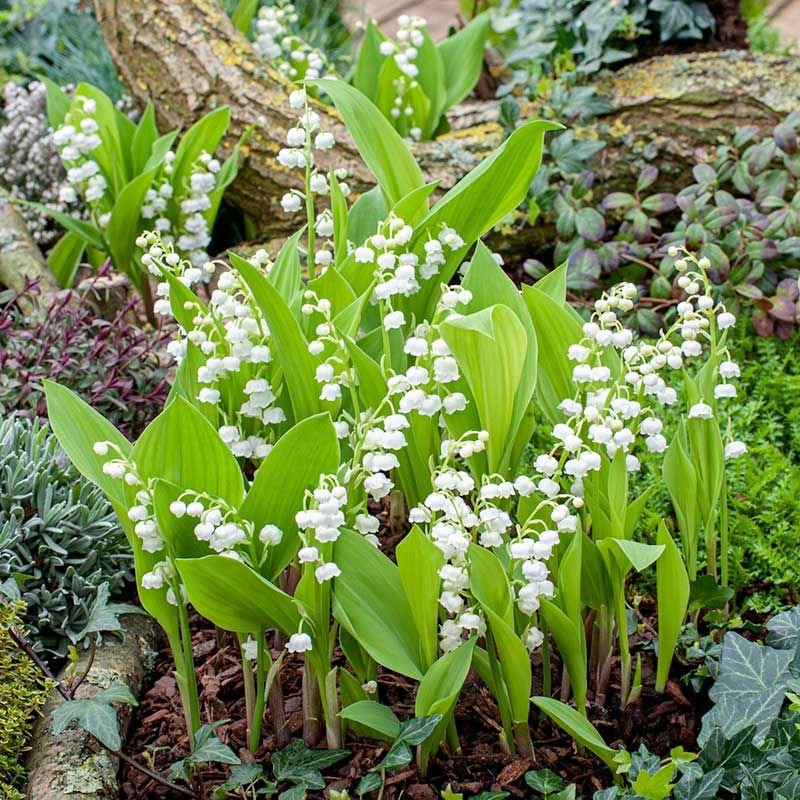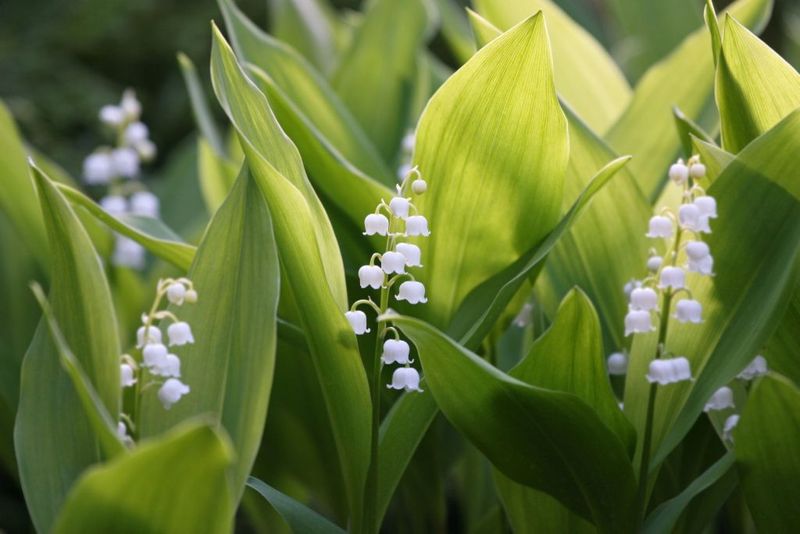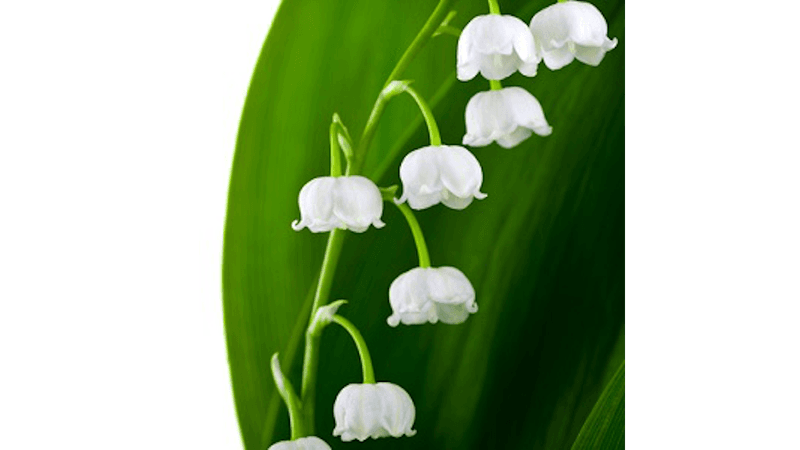Lily of the Valley, scientifically known as Convallaria majalis, is a captivating woodland plant celebrated for its delicate beauty and enchanting fragrance. Its small, bell-shaped white flowers bloom in late spring, gracing gardens and floral arrangements.
However, this charming plant harbors a toxic secret, containing cardiac glycosides that can be harmful if ingested. Despite its toxicity, it remains a popular ornamental plant, symbolizing purity and renewal.
This article explores ten essential tips for appreciating and handling Lily of the Valley safely, while reveling in its historical significance and captivating charm.
1. Identifying the Beauty
Lily of the Valley’s allure lies in its tiny, bell-shaped white flowers that sway gently on slender stalks. Picture walking through a shaded woodland, where these flowers form a delicate carpet beneath towering trees.
Their subtle elegance is enhanced by broad, lance-shaped green leaves that provide a contrasting backdrop. Each cluster of blooms seems like nature’s jewelry, adding charm to forest floors.
To truly appreciate their beauty, take a moment to observe how sunlight filters through the leaves, casting playful shadows. Look closely, and you’ll discover a masterpiece of nature’s artistry.
2. Fragrance that Captivates
Imagine the air filled with a sweet, intoxicating fragrance that lingers long after the flowers have faded. That’s the scent of Lily of the Valley, often rivaling the finest perfumes.
Its fragrance is sweet, strong, and unmistakably fresh, evoking images of early mornings in a blooming garden. This scent has graced perfumes and bridal bouquets for centuries, symbolizing purity and joy.
To capture this essence, try pressing a fresh bloom between your fingers and inhale deeply. Experience the timeless allure that has enchanted generations and made it a cherished floral note.
3. Understanding Its Habitat
Lily of the Valley thrives in shady, wooded areas where the soil is moist and rich. Picture a serene forest setting, where dappled sunlight filters through a canopy of leaves, creating a perfect environment for these plants.
Native to cool temperate regions of the Northern Hemisphere, they flourish in gardens that mimic their natural habitat. Embrace their preference for shaded corners and remember, the more natural the setting, the happier the plant.
Creating this environment at home can bring a touch of woodland magic to your garden, inviting tranquility and beauty.
4. Blooming Season Insights
As spring’s gentle warmth awakens the earth, Lily of the Valley blossoms with grace. Typically blooming in May, these flowers herald the season of renewal and hope.
Imagine walking through a meadow, where the ground is adorned with their delicate bells, swaying in the spring breeze. Their timing is impeccable, celebrating the end of winter’s grasp.
The fleeting beauty of their blooms is a reminder of nature’s cycles, urging us to savor each moment. Whether in gardens or bouquets, their presence in late spring fills hearts with joy and inspiration.
5. Symbolism and Traditions
Lily of the Valley carries deep symbolism, representing purity, humility, and a return to happiness. Traditionally, it’s the flower for May Day and weddings, its presence a blessing of joy and love.
Picture a bride holding a bouquet of these delicate flowers, their fragrance mingling with the day’s excitement. They are tokens of good fortune and a prosperous future.
Embrace these traditions and let the flowers’ symbolism inspire your own celebrations. Whether as a gift or garden addition, they’re a timeless expression of heartfelt sentiments and cherished memories.
6. Toxicity: Handle with Care
Beneath its innocent appearance, Lily of the Valley harbors a toxic secret. All parts of the plant, including flowers, leaves, and berries, contain cardiac glycosides. These compounds can cause nausea, vomiting, and in severe cases, irregular heartbeats.
Always handle with care, washing hands after touching any part of the plant. Keep them out of reach of children and pets, and never ingest them. Despite this, their beauty remains captivating, a reminder of nature’s duality.
Respecting their power ensures you enjoy their beauty without risk.
7. Recognizing Symptoms of Poisoning
If ingested, Lily of the Valley can lead to serious health issues. Symptoms include nausea, vomiting, dizziness, and confusion. Imagine the sudden onset of these symptoms, disrupting a peaceful day.
Recognizing these signs early can prevent severe complications. Seek immediate medical attention if ingestion is suspected. This awareness not only safeguards health but also enhances appreciation for the plant’s enchanting yet deceptive nature.
Educating yourself and others about these symptoms allows you to admire its beauty while prioritizing safety, ensuring a harmonious coexistence.
8. Ornamental Uses in Gardens
Lily of the Valley is a cherished ornamental plant, adding elegance to gardens with its dainty flowers and lush foliage. Imagine a garden path lined with these blossoms, their fragrance mingling with the morning dew.
They thrive as ground cover, providing continuity and charm. Their presence in garden borders offers a touch of sophistication and timeless beauty.
Incorporating them into your landscape design can create a serene oasis, a peaceful retreat from the daily hustle. Remember to plant them in shaded, moist areas for a naturalized woodland effect.
9. Cautious Use in Herbal Medicine
In herbal medicine, Lily of the Valley holds a place of caution. Though occasionally used for heart-related ailments, its toxicity requires expert guidance. Picture an herbalist’s workspace, where knowledge and respect for the plant’s power are paramount.
The potential benefits come with significant risks, urging only the most experienced to utilize it. Its role in traditional medicine is a testament to its complex nature.
Embrace an informed approach, respecting its medicinal history while acknowledging its potential dangers. Consulting professionals ensures safety and maximizes its herbal potential.
10. Embracing Synthetic Alternatives
Due to its toxic nature, synthetic versions of Lily of the Valley’s delightful fragrance are often used in perfumery. Imagine a modern laboratory, where skilled perfumers recreate its aroma without the associated risks.
These synthetic alternatives capture the essence of the plant, allowing safe enjoyment of its scent. This innovation honors its natural beauty while ensuring safety for all.
Whether in perfumes or scented products, embracing these alternatives highlights a blend of tradition and modernity, enabling appreciation of its enchanting fragrance in a risk-free manner.
